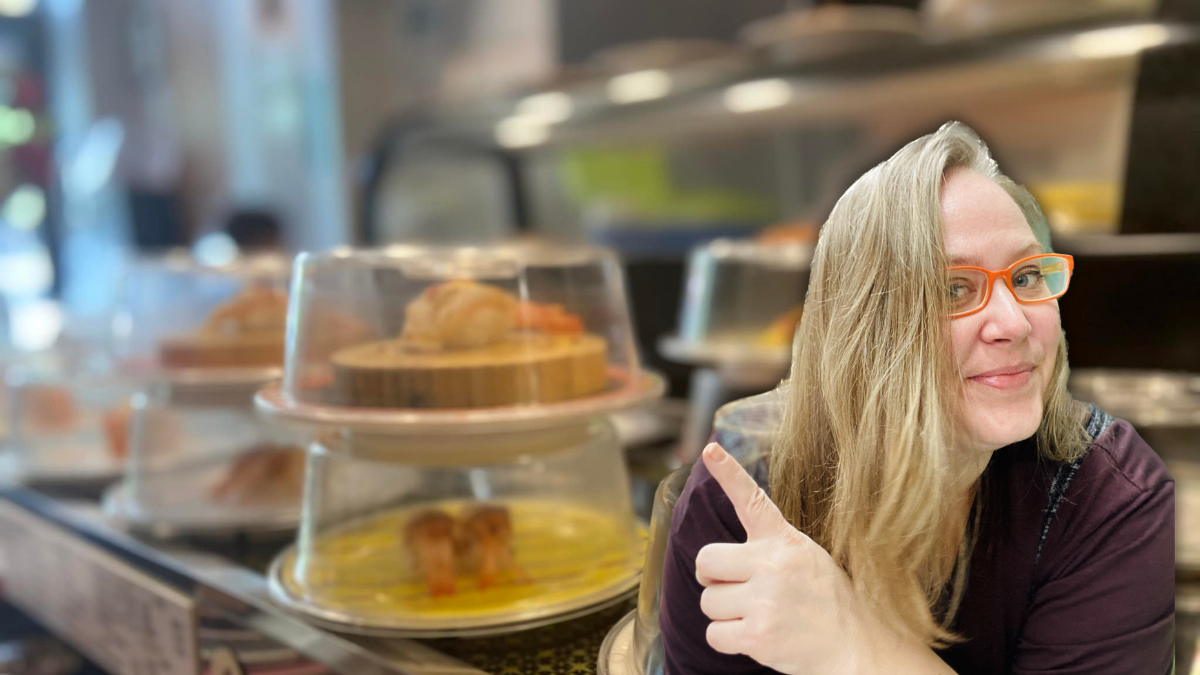
Best Conveyor Belt Sushi Spots in Pyeongtaek Korea
Let’s get ready to eat! Time to try all of the best conveyor belt sushi spots in Pyeongtaek-si, South Korea. The perfect meal for a date night or when you need something quick.
- How Conveyor Belt Sushi Works in Korea: A Beginner’s Guide
- How They Often Work in Korea
- Best Places for Conveyor Belt Sushi in Pyeongtaek-si
- Sushi Dishes to Try in Korea
- How to Eat and Pay
- Can You Eat Alone?
- Clean and Comfortable
- Tips Before You Go
- Searching for Conveyor Belt Sushi Restaurants
- Final Thoughts
How Conveyor Belt Sushi Works in Korea: A Beginner’s Guide
If you’re living in or visiting Korea and love sushi, you’ve probably seen restaurants where sushi moves along a belt. This style of dining is called 회전초밥 (hoejeon chobap) in Korean, which means “revolving sushi.” In English, it’s known as conveyor belt sushi or sushi train.
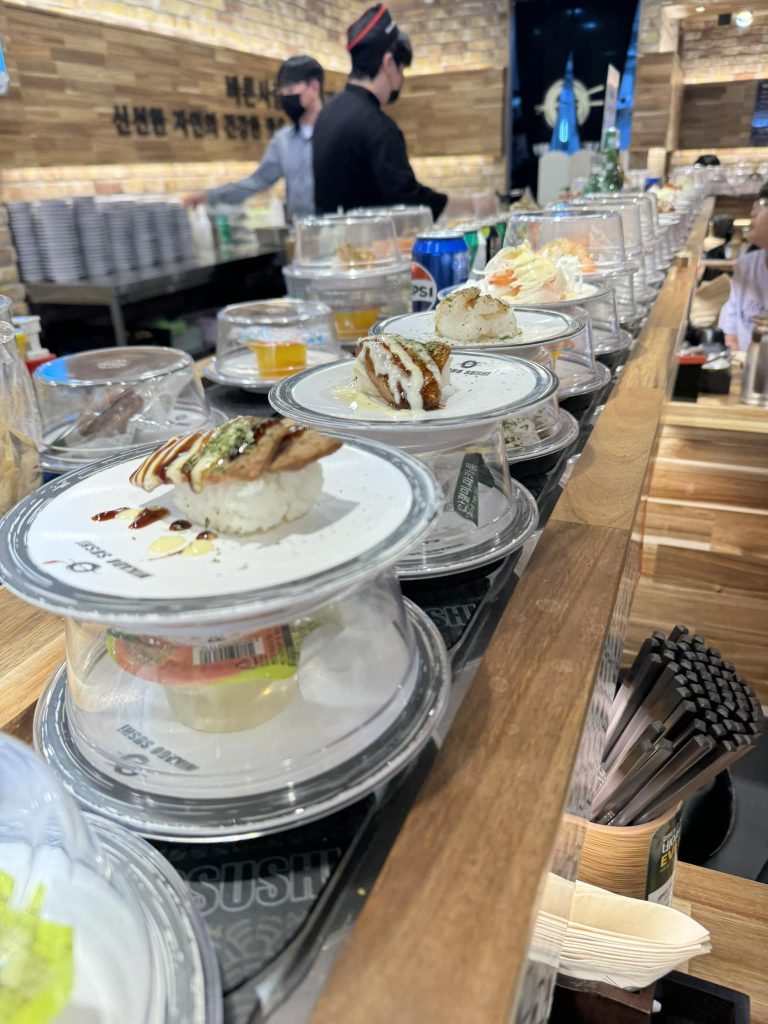
Conveyor belt sushi is popular in Korea because it’s quick, affordable, and fun. Here’s what to expect and how it may be different from sushi restaurants in other countries.
What Is Conveyor Belt Sushi?
At these restaurants, sushi plates move around the seating area on a conveyor belt. You simply grab the ones you want to eat. Most restaurants have bar seating, and some have tables. It’s a great option for people dining alone or in small groups.
How They Often Work in Korea
Conveyor belt sushi in Korea has some special features that may make it different from some places like Japan or the United States. If it’s the same as what you are used to, perfect. However, it might not be the same for everyone so here is what to expect.
Often, but not always, a Flat Price Per Plate
Many Korean chain conveyor belt sushi restaurants offer a single price for basic plates. For example, they might be like 1,900 KRW, 1,990 KRW, or 2,200 KRW per plate. Premium items may cost more, but these are usually on separate colored or wooden plates and clearly labeled.
Made-to-Order Options
Not everything appears on the belt. Many restaurants allow you to order directly from the chef, through a tablet, or by requesting it by name. If you can’t read the menu, you can often point to it on the picture menus. For example, you can request special items or ask for your sushi to be freshly prepared. This often doesn’t cost more than the regular plates going around the belt.
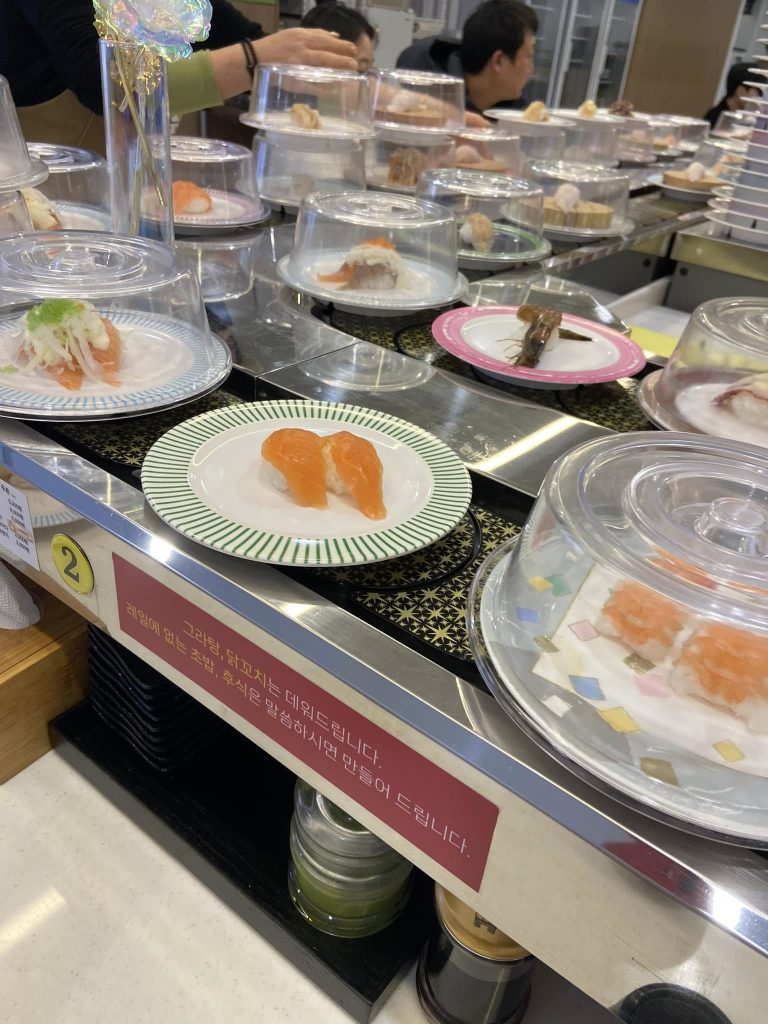
Korean-Inspired Flavors
In Korea, you’ll find sushi with toppings like bulgogi (marinated beef), spicy sauces, cheese, or garlic. Torched sushi, called 불초밥, is also very popular. You may also find different types of glazes and sauces than you find in other countries. They often lean toward sweet or spicy flavors. Expect some surprises along the way.
Side Menus
Korean conveyor belt sushi restaurants often offer more than just sushi. You might see:
- Udon noodles
- Cold soba noodles
- Donburi rice bowls
- Tempura
These side dishes are great if you want something warm or filling.
Best Places for Conveyor Belt Sushi in Pyeongtaek-si
If you live in Pyeongtaek-si, Gyeonggi-do, South Korea, try one of these wonderful options:
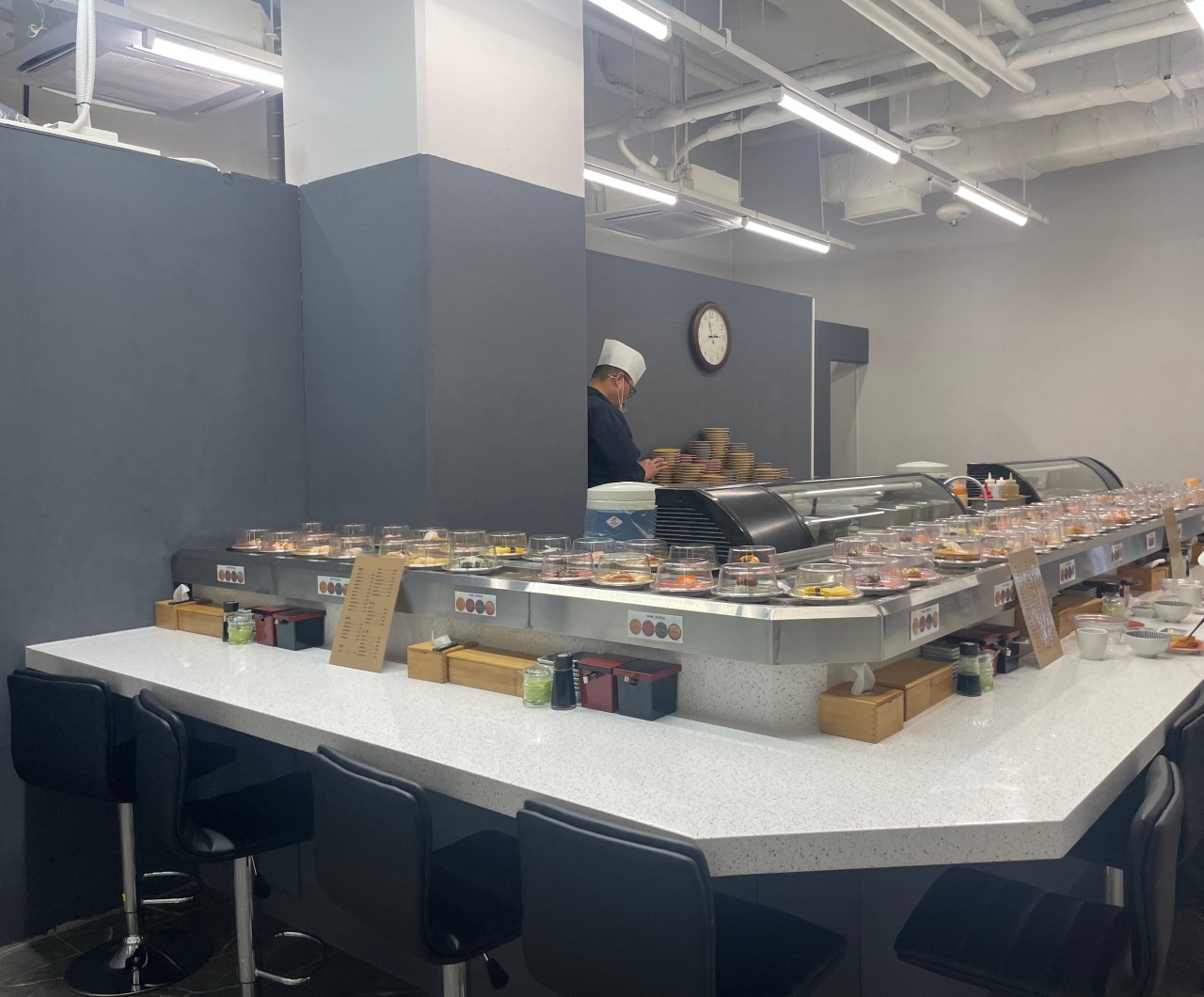
Ichibang Conveyor Belt Sushi 2nd Branch
0507-1398-6677
Copy and paste phone numbers into Naver Maps to get directions
Description:
Best of Pyeongtaek Winner 2025 - Ichibang Conveyor Belt Sushi 2nd Branch in Pyeongtaek offers approachable, value-for-money sushi on a rolling conveyor. Plates come at an affordable flat rate, and the menu includes salmon, tuna, shrimp, and seasonal selections. Located near the Godeok area, it features convenient parking, takeout options, and simple, modern seating. With its focus on freshness and effortless service, it’s a reliable choice for casual groups families, or solo diners seeking tasty sushi without fuss.
Hangul Address:
경기 평택시 고덕동 2618-3
Hangul Name:
이찌방회전초밥 2호점
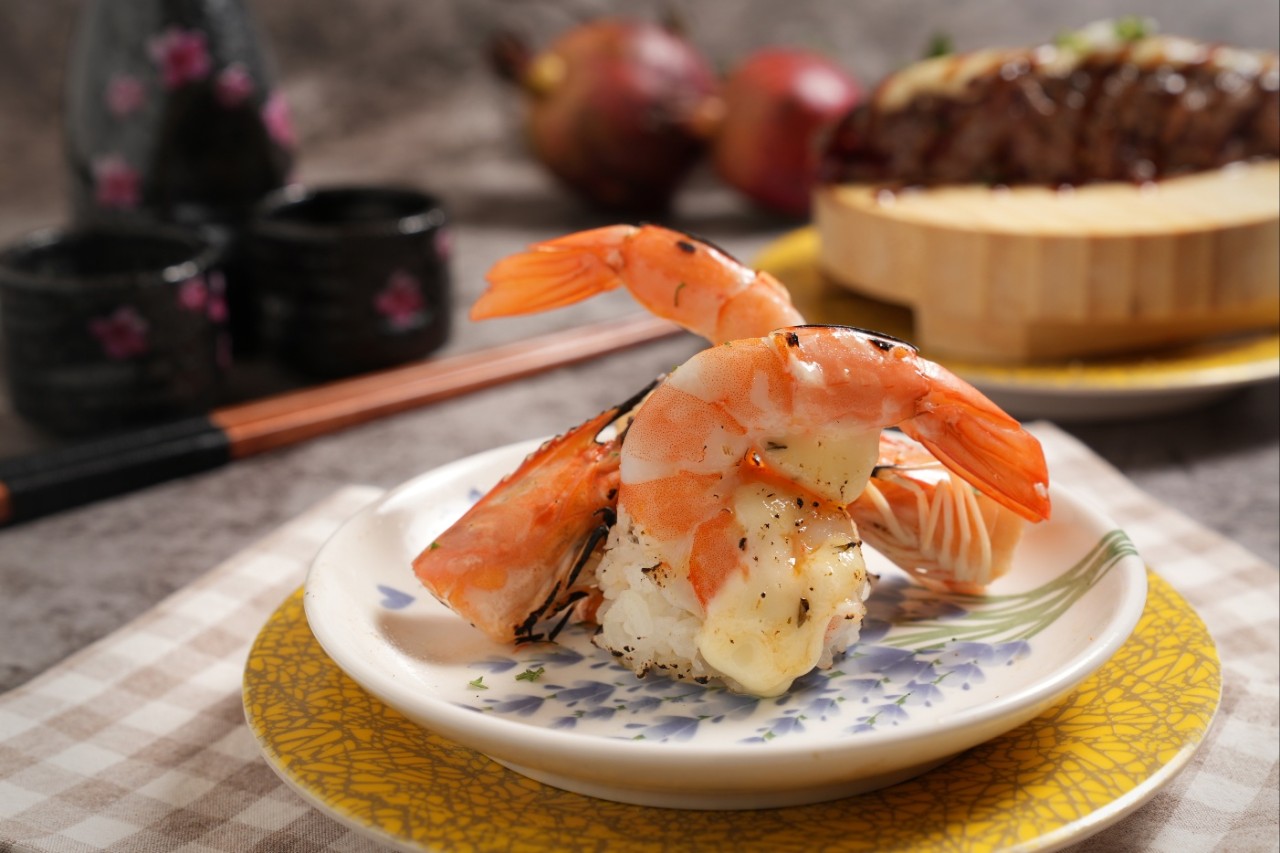
Sushi Ian An at Pyeongtaek’s Yongjuk
0507-1361-6617
Copy and paste phone numbers into Naver Maps to get directions
Description:
Sushi Ian An at Pyeongtaek’s Yongjuk district is a modern conveyor-belt sushi spot offering all plates at a wallet-friendly 1,990 KRW each. With around 20 bar seats plus a few tables, it draws steady crowds—reservations via Tableing app are recommended. Diners praise the clean, compact rice-to-fish ratio and generous variety, from shrimp tempura and beef tataki to scallop, octopus, uni, and inventive rolls. Quick service, free miso soup, and standout fried items round out the experience.
Hangul Address:
경기 평택시 용죽5길 6-19
Hangul Name:
스시이안앤 평택용죽점
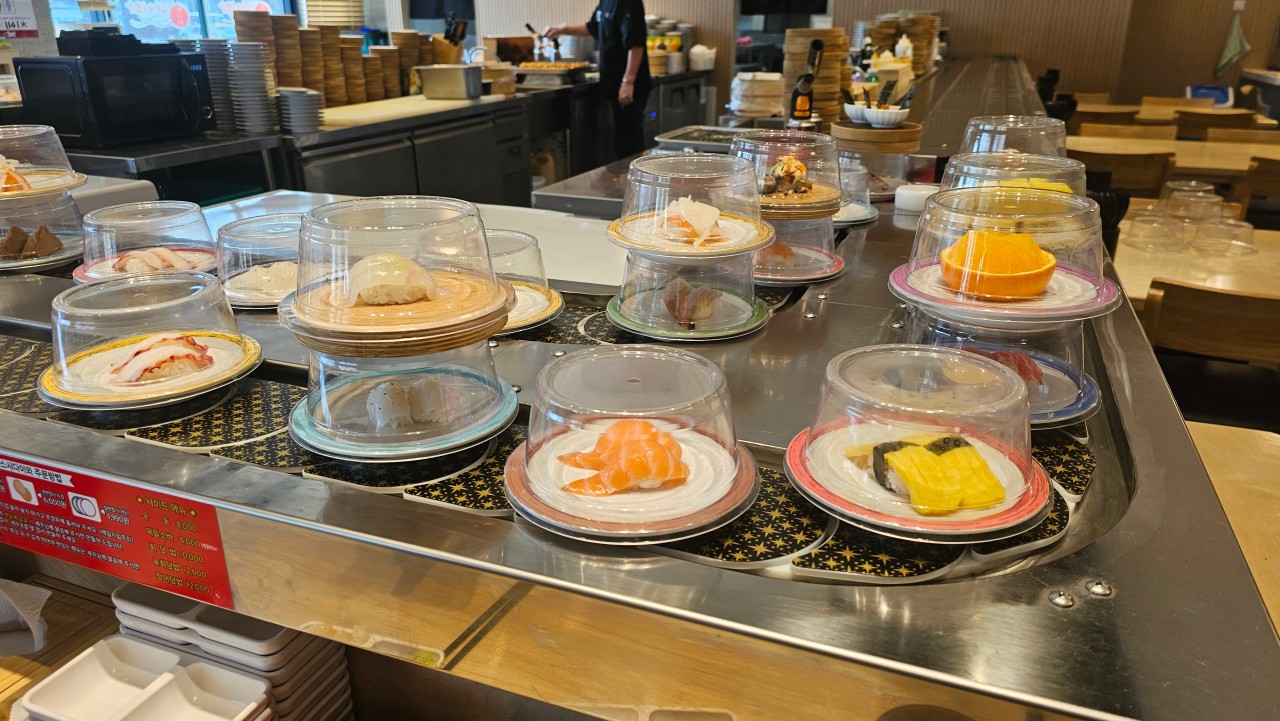
Sushi Daiwa in Anjung
031-684-0117
Copy and paste phone numbers into Naver Maps to get directions
Description:
Sushi Daiwa in Anjung, Pyeongtaek is a value‑focused conveyor‑belt sushi restaurant offering plates at a flat ₩1,990, with premium wooden‑plate options (₩3,000/₩6,000). A variety of fresh items—salmon, torch‑seared sushi, beef tataki—pass by on a clean L‑shaped counter, and you can also order made‑to‑order dishes. Side menus like udon, soba, and donburi add versatility. Spacious seating with bar and tables, free parking, and enthusiastic, attentive staff make it ideal for solo diners, families, or casual groups.
Hangul Address:
경기 평택시 안중읍 안현로 338
Hangul Name:
경기 평택시 안중읍 안현로 338 SKYIN 빌딩 104호,105호,106호
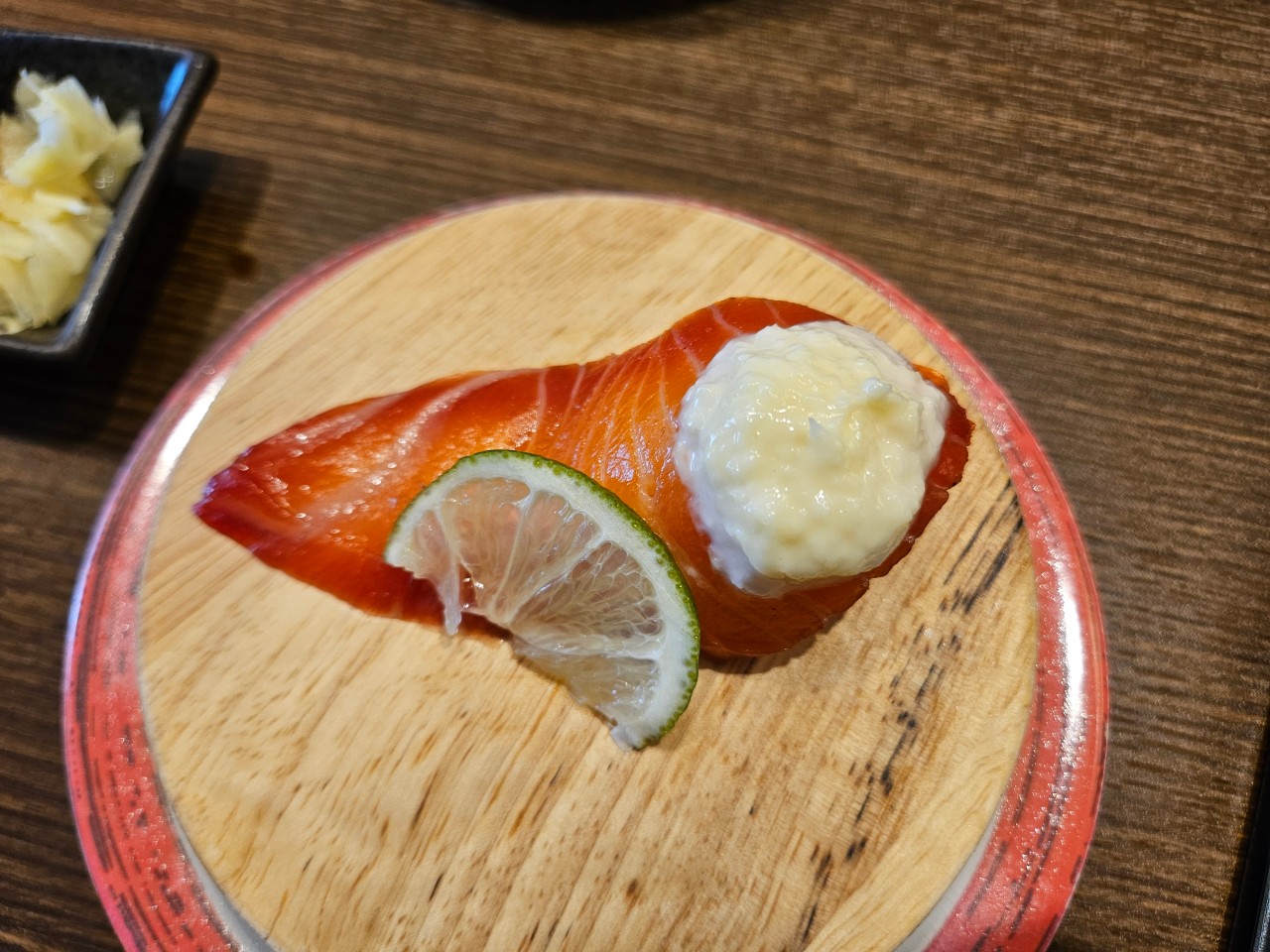
Mugunghwa Conveyor Belt Sushi Pyeongtaek-si
0507-1392-1617
Copy and paste phone numbers into Naver Maps to get directions
Description:
Mugunghwa Conveyor Belt Sushi in Pyeongtaek offers over 70 types of sushi at a flat rate of 1,990 KRW per plate. From salmon and flounder to beef tartare and torched options, each piece is made with fresh ingredients and balanced portions. The restaurant features both bar seating and small tables, making it great for solo diners or small groups. With options like udon and cold soba, it’s an ideal spot for a casual meal or sushi date in Pyeongtaek.
Hangul Address:
경기 평택시 평남로 929
Hangul Name:
무궁화회전초밥 평택
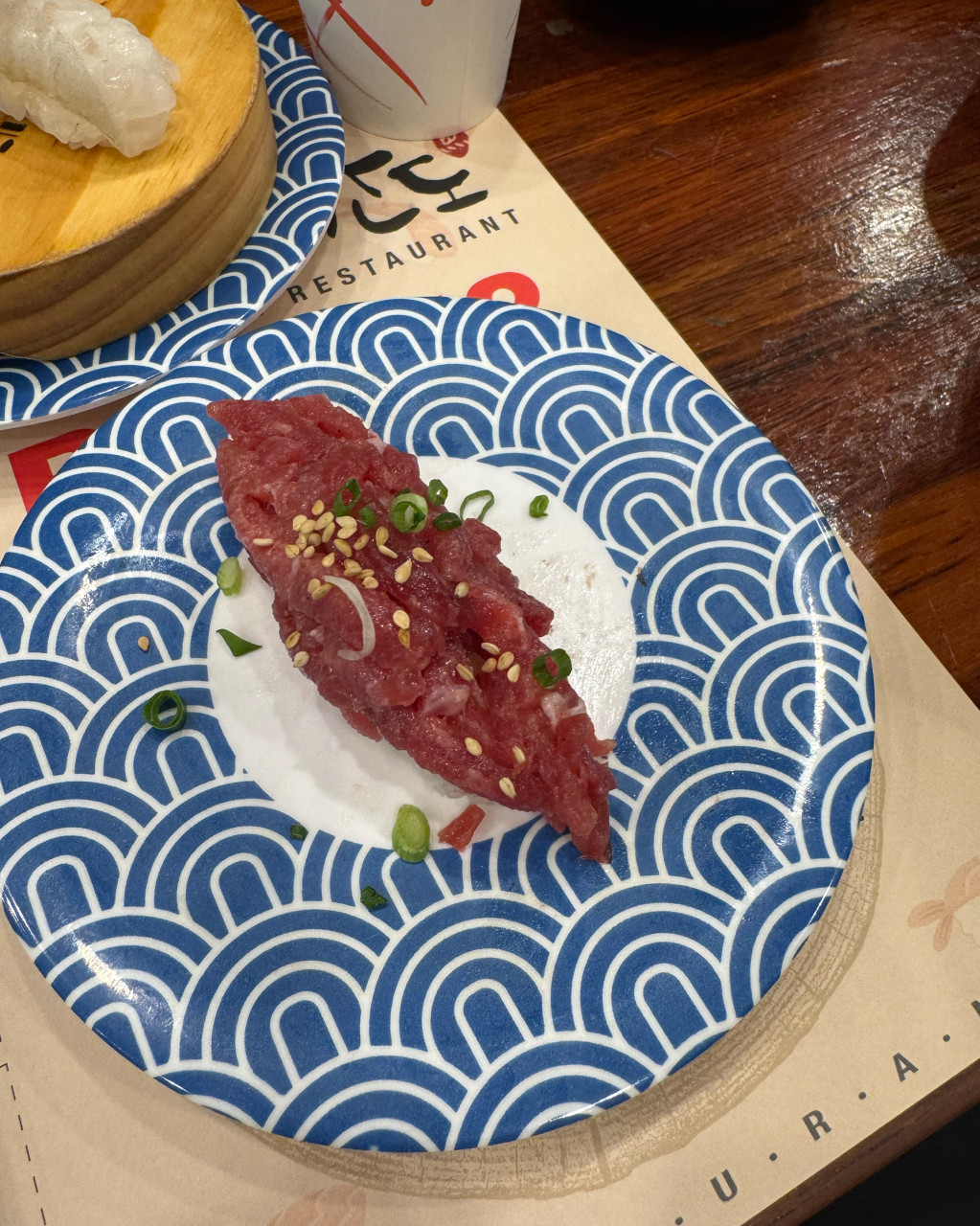
Sushi No Kando Pyeongtaek Godeok
031-663-5578
Copy and paste phone numbers into Naver Maps to get directions
Description:
Sushi No Kando at Pyeongtaek Godeok offers conveyor-belt sushi with all plates priced at a uniform ₩2,200. Over 70 menu items—salmon, scallop, beef tartare, uni, cheese shrimp, soy-marinated shrimp, and more—circulate on the belt, and additional items can be made to order ([sushinokando.com][1]). The bright, clean interior surrounds a central kitchen where diners can watch chefs work in real time . Popular dishes include egg‑shrimp, tuna tataki, and marinated shrimp. Friendly staff, UV‑sterilized plates, and attentive service make it ideal for solo meals, casual dinners, or lunch groups.
Hangul Address:
경기 평택시 고덕중앙로 200-4
Hangul Name:
스시노칸도
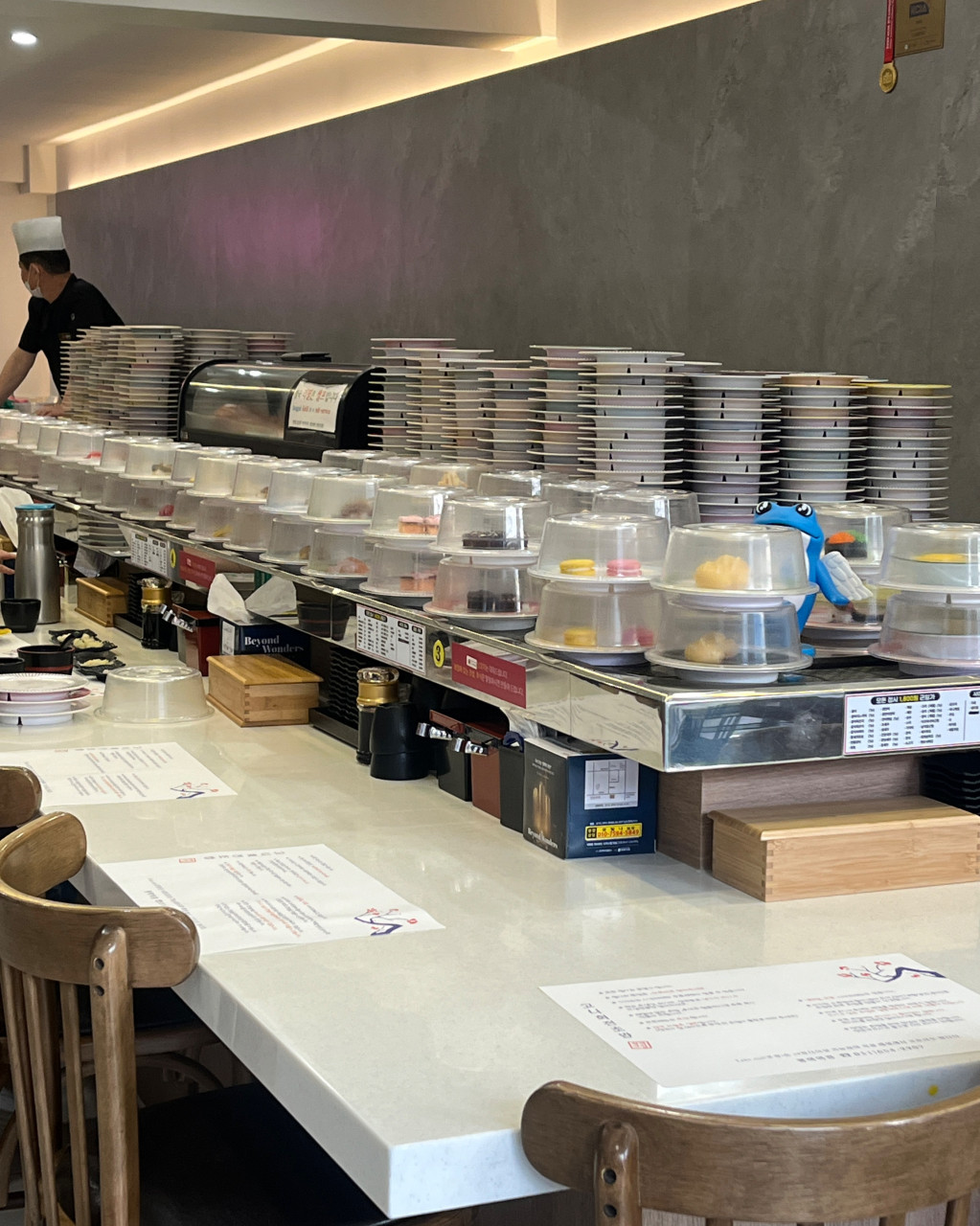
Goni Conveyor Belt Sushi Pyeongtaek-dong
0507-1483-2208
Copy and paste phone numbers into Naver Maps to get directions
Description:
Goni Conveyor Belt Sushi (Pyeongtaek Station Branch) offers fresh sushi at affordable prices in a casual setting. A variety of sushi plates—like salmon, flounder, scallop, and shrimp—circulate on a conveyor belt for easy selection. The open-bar seating lets you watch the chefs prepare each dish in real time, adding a unique touch to your meal. It’s a great spot for solo dining or casual outings with friends near Pyeongtaek Station.
Hangul Address:
경기 평택시 평택2로 16
Hangul Name:
고니회전초밥 평택역점
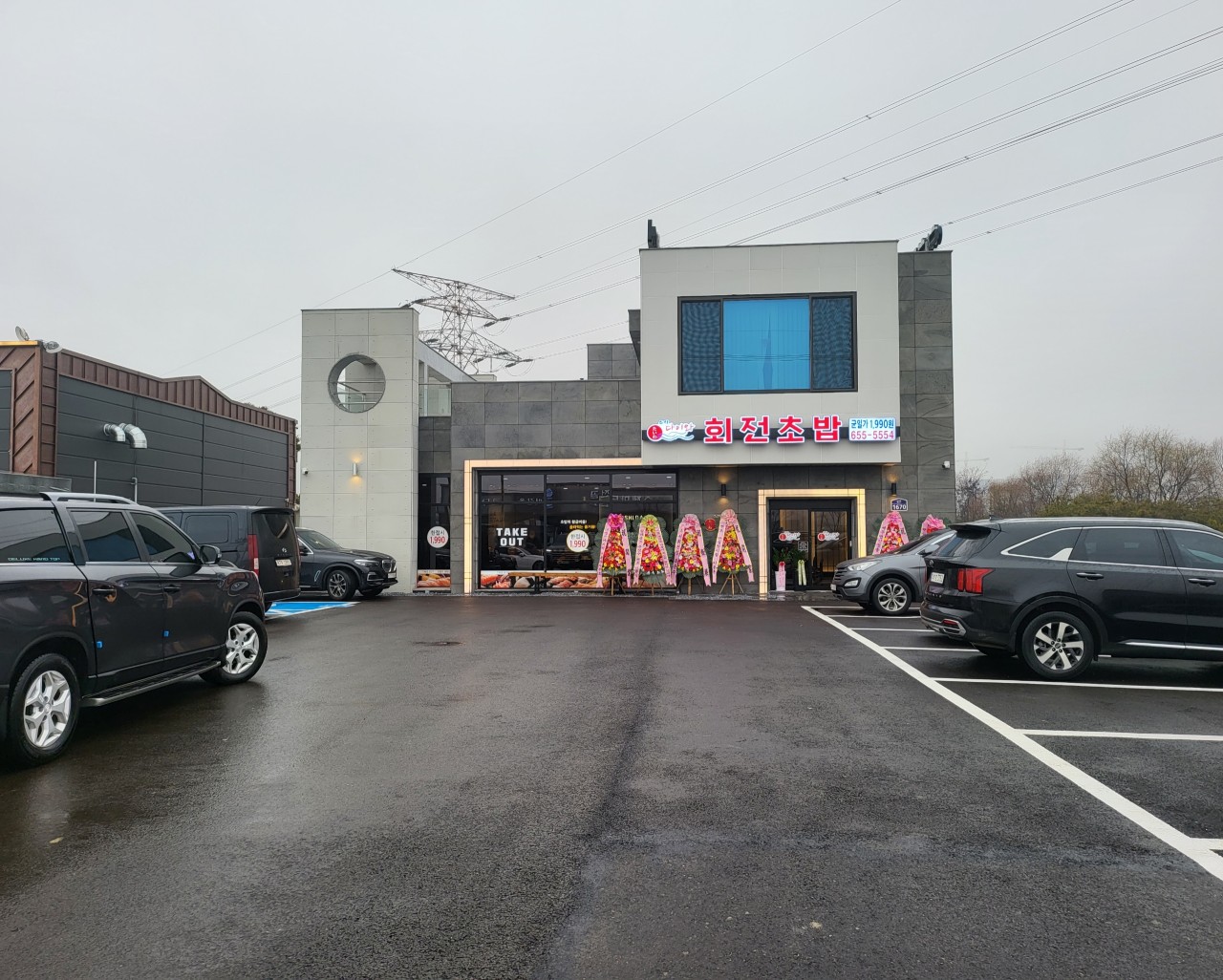
Sushi Daiwa Jukbaek
031-655-5554
Copy and paste phone numbers into Naver Maps to get directions
Description:
Sushi Daiwa (평택점) is a top-rated conveyor‑belt sushi restaurant offering affordable freshness—each standard plate is ₩1,990, with premium wooden plates at ₩3,000 each. Set in a stand‑alone building with a large parking lot and no break time, it’s accessible for solo diners, families, or groups. The modern interior features a clean L‑shaped counter where chefs prepare made-to-order items on request. Popular picks like tuna belly, shrimp tempura, egg, and beef are praised for freshness and value, earning consistently high review scores .
Hangul Address:
경기 평택시 죽백동 451-5
Hangul Name:
스시다이와 회전초밥 평택점
Sushi Dishes to Try in Korea
Here are some common and popular dishes at Korean conveyor belt sushi restaurants. We aren’t saying these don’t exist in other countries, we are just saying they are worth trying in Korea to see how you like them:
| Korean Name | English Name | Description |
|---|---|---|
| 연어 | Salmon | Soft and fresh, a favorite across Korea |
| 광어 | Flatfish | Light and chewy, often served plain |
| 소고기 타다끼 | Beef Tataki | Lightly seared beef with toppings |
| 새우튀김 | Shrimp Tempura | Fried shrimp served warm or as sushi |
| 계란초밥 | Tamago Sushi | Sweet egg on rice, soft and fluffy |
| 불초밥 | Torched Sushi | Grilled toppings like mayo or cheese |
| 유부초밥 | Inari Sushi | Rice wrapped in sweet tofu skin |
How to Eat and Pay
Generally speaking, paying for conveyor belt sushi works the same in Korea as in other countries. However, if you haven’t been to a restaurant like this, it might feel uncomfortable at first. Here is how it tends to go:
- Take plates off the belt as they pass.
- Stack your plates at your seat.
- When you’re done, the staff will count the plates and total your bill.
- Most places have self-serve stations for water, ginger, wasabi, and soy sauce.
- Miso soup is often free, but you may need to ask for it.
Can You Eat Alone?
Yes. Many people eat alone at conveyor belt sushi restaurants in Korea. It’s normal and convenient. Bar seating makes it easy to enjoy a quiet, fast meal. In fact, conveyor belt sushi options became increasingly popular after 2020 as more people began eating alone in Korea.
Clean and Comfortable
Korean conveyor belt sushi restaurants often feel bright and clean. Many offer:
- Phone charging stations
- Free mints
- Blankets in winter
- Kid-friendly utensils
These extras help make the experience more comfortable for all customers.
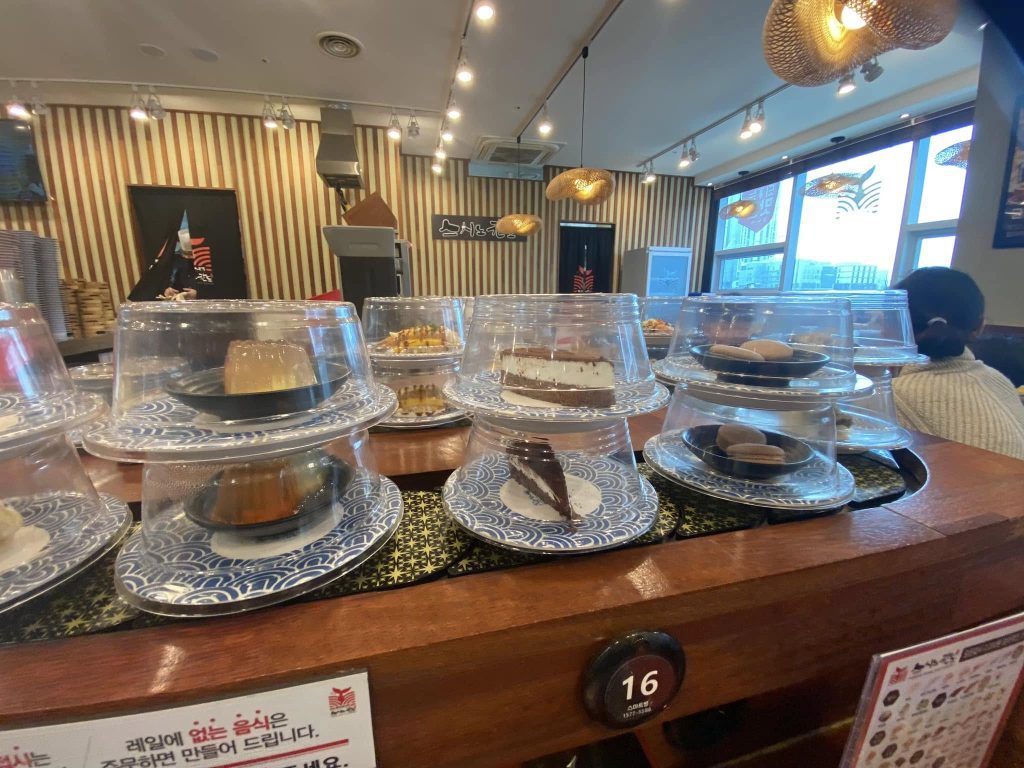
Tips Before You Go
Yes, this
- Busy times are around lunch and dinner hours, especially on weekends.
- Some restaurants use apps like Tableing for waitlists or reservations.
Searching for Conveyor Belt Sushi Restaurants
Although, this blog post has options in Pyeongtaek for you to visit, you might want to each conveyor belt sushi in other parts of the country. That’s why we like to include the search terms you need to find your favorite things easily! Search “회전초밥 + your city” on Naver or Kakao Maps.
Final Thoughts
Conveyor belt sushi in Korea is a fast, fun, and affordable way to try many types of sushi. With flat prices, Korean-style flavors, and easy ordering, it’s a great experience whether you’re a sushi expert or just starting out.
Next time you see a 회전초밥 restaurant in your neighborhood, give it a try. You might find a new favorite dish or at least a fast and easy spot to grab a meal.
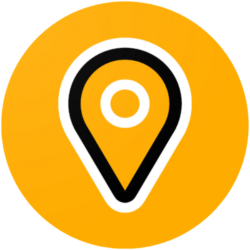
Founded in 2015, the South of Seoul team consists of volunteers on three continents working together to support English-speaking people traveling or living in South Korea. South of Seoul volunteers work with organizations and individuals across South Korea to improve equitable access to information across South Korea. Much of South of Seoul’s information focuses on Pyeongtaek, Gyeonggi-do, South Korea.
Blogs published under the authorship of “South of Seoul” include blogs compiled by multiple volunteers to improve access to standardized information unrelated to individualized personal experiences.





